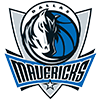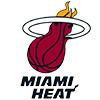The Carolina running back will miss time after suffering a strained hamstring in the team's Thursday night win over the Texans. Hamstring strains are one of most frequently reported injuries in professional sports. Anyone who has played fantasy sports is aware of the headache that accompany these injuries and their associated recovery process. Let's take a look at how and why hamstring strains are so problematic.
To start, the hamstring is a muscle group made up of three separate muscles, not an isolated, individual muscle. The hamstring muscles run from the pelvis to knee, making them a two-joint muscle. As a result, they are involved in both hip and knee movement, specifically hip extension and knee flexion. The hamstrings are particularly active when walking or running, working against the quadriceps to accelerate and decelerate the leg when performing these motions. Unfortunately, these demands make the hamstring susceptible to injury, especially in a start-and-stop sport like football.
Once a strain has occurred, a delicate healing process begins. The initial inflammatory response includes natural clotting and is marked by swelling. While the inflammatory phase continues, true repairing of the damage begins in a phase known as the proliferative phase. During this stage, specialized cells repair the area where the soft tissue failed. Protein fibers, including collagen and elastin, serve as the spackle, filling the gaps that developed when the strain occurred. Proliferation occurs even in a low-grade strain. Over time the "spackle" develops into true scar tissue. The scar
The Carolina running back will miss time after suffering a strained hamstring in the team's Thursday night win over the Texans. Hamstring strains are one of most frequently reported injuries in professional sports. Anyone who has played fantasy sports is aware of the headache that accompany these injuries and their associated recovery process. Let's take a look at how and why hamstring strains are so problematic.
To start, the hamstring is a muscle group made up of three separate muscles, not an isolated, individual muscle. The hamstring muscles run from the pelvis to knee, making them a two-joint muscle. As a result, they are involved in both hip and knee movement, specifically hip extension and knee flexion. The hamstrings are particularly active when walking or running, working against the quadriceps to accelerate and decelerate the leg when performing these motions. Unfortunately, these demands make the hamstring susceptible to injury, especially in a start-and-stop sport like football.
Once a strain has occurred, a delicate healing process begins. The initial inflammatory response includes natural clotting and is marked by swelling. While the inflammatory phase continues, true repairing of the damage begins in a phase known as the proliferative phase. During this stage, specialized cells repair the area where the soft tissue failed. Protein fibers, including collagen and elastin, serve as the spackle, filling the gaps that developed when the strain occurred. Proliferation occurs even in a low-grade strain. Over time the "spackle" develops into true scar tissue. The scar tissue is then progressively remodeled until it resembles healthy muscle tissue.
Unfortunately, the remodeling phase is far from organized. A detailed treatment and rehab protocol can add method to this madness and help make the healing process more efficient. If done correctly, the newly formed scar tissue can be made stronger, and the risk of aggravation or re-injury can be reduced.
Here's where things get particularly tricky to navigate. While remodeling is occurring, an athlete often reports an improvement in symptoms and functional limitation as some healing has occurred. However, early scar tissue does not have the same biometric characteristics as healthy muscle tissue and is vulnerable to re-injury. Consequently, if an athlete returns too soon and disrupts the injury site, the entire healing process must start over from the beginning.
Given this fickle process, it's easy to see why even a mild hamstring strain can result in a multiweek absence for NFL players. Furthermore, once one hamstring strain has occurred, the chances of a future hamstring increases. The Carolina medical team is fully aware of these concerns, which is why I expect them to handle his recovery conservatively. While the team has opted to not place him on the IR, I still think it's unlikely we see McCaffrey before Week 6. Chuba Hubbard becomes the feature back in Carolina.
Turf Burns
A.J. Brown: The Titans receiver is facing the same issues as discussed with McCaffrey. The team is listing him as "week-to-week" and it wouldn't be shocking to see him inactive through Week 6. Nick Westbrook-Ikhine moves up the Tennessee depth chart and showed upside in limited action against the Colts, finishing with four receptions for 53 yards and a score.
Dalvin Cook: Cook did not play in the team's Week 3 win over the Seahawks due to an ankle sprain, and his status for Week 4 remains uncertain. While it's frustrating to have Cook miss time, I like the approach by Minnesota. Instead of fantasy managers having to guess or predict Cook's potential productivity, they knew he was unavailable and were able to insert a player with a guaranteed role into that roster spot. Hopefully that meant you had Alexander Mattison as an insurance policy, as the third-year running back finished with 112 rushing yards on 26 carries while adding six catches for 59 receiving yards. Make a note of Cook's availability in practice as the week progresses to get a better idea of his availability for Week 4. If Cook ends up sitting out a second straight game, Mattison would once again be the starting running back.
Darrell Henderson: The Rams running back is trending in the right direction, and the team is hopeful he will return in Week 4. Henderson did not play against Tampa Bay after suffering a rib cartilage injury in Week 2. The ribs connect to the sternum (breastbone) by cartilage known as the costal cartilage. This specialized tissue allows the ribcage to expand while breathing. Fractures of the costal cartilage are relatively common in the NFL with players like Michael Vick, LeSean McCoy and Aaron Donald suffering the injury in recent seasons. Henderson is improving and may opt to wear additional padding or a flak jacket around his midsection to brace the area. However, this padding does increase a player's bulk and could make him more prone to fumbling. Sony Michel will remain the Los Angeles starter if Henderson suffers a setback or is a late scratch.
Josh Jacobs: The Las Vegas running back has not played since suffering a toe sprain in Week 1. I mentioned at the time that turf toe injuries are slow to heal and very limiting, and a multiweek absence was probable. Jacobs will try to practice this week, but his status could make for a dicey fantasy situation. The Raiders do not play until Monday night, and those unable to roster Jacobs and his backups, Kenyan Drake or Peyton Barber, could be left empty-handed if this ends up being a game-time decision. Hopefully we get some clarity as the week develops, but this looks tenuous at best. Barber impressed in Week 3, finishing with 111 rushing yards and a touchdown on 23 rush attempts.
San Francisco RBs: Trey Sermon completed the league's mandated concussion protocol with enough time to be named the starter for Week 3 and rushed 10 times for 31 yards and a touchdown in his first NFL start. The performance may not have been enough to move him up the depth chart and past Elijah Mitchell, who missed the game with a shoulder injury. The injury has been described as "worse than a stinger" and prevented him for practicing last week. However, the team is hopeful he will be able to return to the practice field this week and be active against the Seahawks. While the Seattle defense serves as a favorable matchup this week, the uncertainty around who will receive the bulk of the carries makes it difficult to trust one specific player. Keep a close eye on how this shakes out with Sermon seeing a bump in value should Mitchell miss another week.










































